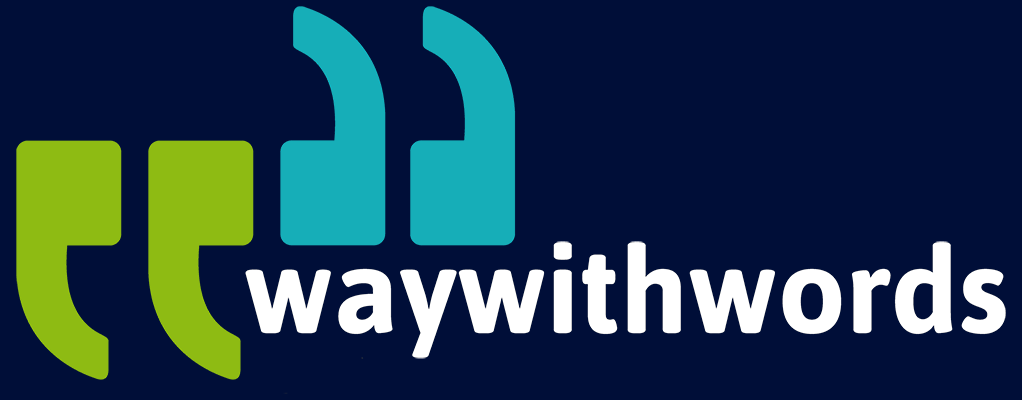How Do Custom Transcript Formatting Options Improve Readability?
Don’t Treat Formatting as an Afterthought
In transcription, accuracy is only part of the equation. The way a transcript looks—its layout, structure, and format—can significantly influence how useful it is to the person reading it. Whether you’re scanning a legal deposition, analysing interview data, finalising a contract as a real estate professional for real estate purposes or reviewing a video transcript for editing purposes, the clarity of the document matters just as much as the words themselves. That’s where custom transcript formatting comes into play.
Every reader approaches a transcript with different needs. A media producer might need clear speaker labels for time-coded editing, while a legal team may rely on consistent paragraphing and precise timestamps. Academics may want thematic breaks or headings to segment long discussions. It’s not about making a transcript look pretty; it’s about making it practical and purposeful.
In many professional settings, the way a transcript is presented can mean the difference between seamless integration into workflow—or frustrating back-and-forth to clean up structure. That’s why more and more people are taking advantage of formatting customisation options from the outset.
As a result, professionals across industries regularly ask:
- Can I request specific formatting, such as speaker names, timecodes, or headings?
- Does formatting really affect how easy a transcript is to read or work with?
- What type of formatting should I choose for legal, research, or media transcription?
This short guide explores how custom formatting can improve transcript document readability and usability, highlighting the value of structured transcription across different contexts. We’ll also look at how formatting supports specific industry needs and makes transcripts more functional in everyday use.
Custom Formatting Can Improve Transcript Document Readability & Usability
1. Structured Transcription Enhances Readability
Structured transcription refers to the deliberate use of formatting techniques—like paragraph breaks, indentation, and bold speaker labels—to organise content visually. This improves the flow of information and allows readers to navigate transcripts quickly. It also ensures that a reader can take in the document without having to decipher the flow themselves.
Whether it’s a court proceeding, customer interview, or podcast episode, structured layouts can highlight who’s speaking, separate themes, and reduce visual clutter. Think of it like walking into a clean room with labelled drawers—finding what you need is just easier.
Key Benefits:
- Easier navigation through long transcripts
- Better clarity in speaker turns and topics
- Reduced cognitive load when reviewing
- More efficient communication of complex discussions
- Helps with skimming, scanning, and referencing
2. Common Formatting Requests
Clients often request specific formatting features, especially when transcripts are used professionally. These requests tend to fall into recurring patterns across industries. Some of the most frequent include:
- Speaker identification (e.g. “Interviewer:”, “Respondent:”, “Judge:”, “Patient:”)
- Paragraphing by sentence, time segment, or topic change
- Inclusion of timestamps (e.g. at 15, 30, or 60-second intervals)
- Highlighting important terms, overlapping dialogue, or non-verbal cues (e.g. [laughs], [pause])
These features might sound minor, but in practice, they save hours of post-transcription reformatting and improve the working value of the document immediately.
Common Requests Include:
- Paragraph breaks for readability
- Speaker names in bold or colour-coded
- Indented dialogue for clarity
- Summary headings for sections or themes
- Font type changes to indicate metadata or editorial notes
3. Different Industries, Different Formatting Needs
No one-size-fits-all. A transcript meant for court use differs from one used in qualitative research. Each industry has its own formatting conventions and expectations, and not adhering to them can make a document feel out of place—or worse, unusable.
Legal transcripts, for instance, follow strict conventions and must often include line numbers, certified speaker labels, and timestamps. In contrast, content for a documentary or training module may prioritise ease of reading and editing-friendly formats.
Industry Examples:
- Legal: Line numbers, clear speaker labels, pagination, certified formatting
- Media: Time-synced text, direction notes, editable file structures (e.g. SRT, VTT)
- Education: Thematic sectioning, summary blurbs, citations
- Market Research: Coded segments, analyst highlights, multiple speaker tracking

4. Improving Data Analysis Through Clear Formatting
For researchers, transcripts are often the bedrock of analysis. Messy or inconsistent formatting can slow down projects, skew findings, or introduce human error.
Structured formatting allows data analysts and qualitative researchers to code, highlight, and dissect information with clarity. When sections are cleanly divided, themes are easier to tag, and annotations can be added without confusion.
Formatting Helps With:
- Quicker annotation and referencing
- Reduced risk of misinterpretation or data loss
- Easier quote extraction and reporting
- Clear linkage between audio content and analytical categories
- Greater consistency across multiple transcript sets
5. Legal Use Cases Demand Precision
In legal documentation, clarity isn’t just helpful—it’s a requirement. Legal transcripts are scrutinised for meaning, timing, and attribution. The slightest error or ambiguity in formatting can lead to misinterpretation or, in worst cases, inadmissibility in court.
Legal Clients Often Need:
- Speaker identifiers for judges, witnesses, and counsel
- Timecode placement for referencing
- Notation of interruptions, crosstalk, or pauses
- Consistent font and document structure across cases
Legal Formatting Must Include:
- Line numbers
- Speaker identification
- Interruptions or pauses
- Timestamps at set intervals
- Uniform spacing and layout
6. Enhancing Accessibility for All Users
Accessibility is another vital reason for custom formatting. Transcripts serve many readers, including those with dyslexia, visual impairments, or cognitive differences. A document that’s clear for one reader might be illegible for another.
Adding extra spacing, using accessible font styles, and including headings and summaries helps make content more usable for everyone—especially when shared publicly or distributed in training and education settings.
Accessibility Improvements:
- Larger, readable fonts (e.g. sans serif)
- Clear contrast between text and background
- Use of headers and breakpoints
- Logical layout progression
- Text-to-speech optimised formats
7. Custom Layouts Save Time for Professionals
In professional settings, time is money. Reading through a raw, unformatted transcript can waste hours. Well-structured documents reduce time spent deciphering content and allow busy professionals to find what they need instantly.
HR managers, customer service leads, project managers, and others benefit when transcripts are aligned with their internal formats or workflows.
Saves Time By:
- Structuring data around key questions
- Highlighting specific themes or events
- Enabling faster internal reviews
- Reducing manual editing needs post-delivery

8. Media Teams Need Format-Specific Layouts
Media post-production workflows require transcripts that fit into editing software or production pipelines. That includes time-aligned speaker cues, detailed scene notes, and sometimes even transcription formats specific to captioning tools.
A transcript that doesn’t meet these criteria causes delay and confusion for video editors or directors. Working with transcription providers who understand these demands makes production much smoother.
Media Formatting May Include:
- Scene or shot labels
- Time-based speaker changes
- Music/sound cues
- Annotations for cutaway shots or transitions
9. Supporting Training & Learning Through Design
In corporate training, eLearning, and classroom settings, transcripts often double as lesson material. Good formatting helps learners absorb information more effectively.
Instead of delivering a block of monologue, break content into digestible segments. Use headers, bold summaries, and instructional notes to clarify purpose and meaning.
Training Transcript Features:
- Section headers for modules
- Key takeaways in bold
- Clear dialogue spacing
- Learning objective markers
10. Branding & Internal Formatting Consistency
Branding goes beyond logos and colour palettes. For client-facing documents or internal reporting, consistent formatting reflects professionalism.
Businesses often request transcripts that align with their own branding guidelines—particularly if the transcript will be distributed as part of a report, shared in stakeholder presentations, or included in promotional materials.
Common Requests Include:
- Branded cover pages
- Font and logo specifications
- Structured layout for reports
- Use of visual markers (icons, charts, etc.)
Key Tips When Requesting Custom Transcript Formatting
- Be clear about your industry needs. Legal, academic, and media transcripts vary significantly—there is no universal template.
- Specify your use case. Are you presenting findings, analysing themes, or publishing content? Share that context.
- Ask for a sample layout. Before full-scale delivery, request a 1–2 page layout to ensure alignment.
- Consider accessibility. Readability and usability are crucial for all readers, not just internal teams.
- Collaborate with your provider. Ask questions, clarify goals, and be open to formatting suggestions.
Transcription is no longer a flat, one-size-fits-all service. In a document-heavy setting, layout is not a luxury; it’s a necessity. The clarity, usability, and accuracy of a transcript often hinge on how it is formatted—and that makes custom transcript formatting an essential option for professionals.
From speaker labels to timecoded sections, structured transcription transforms a basic text document into a working tool. Whether you’re a solicitor, producer, HR trainer, or researcher, you stand to benefit from a layout that supports—not hinders—your workflow.
When formatting is carefully planned, it reduces friction, supports diverse working needs, and enhances accessibility. It gives the transcript life beyond the words—making it a true asset. With well-designed formatting, a transcript becomes something you can rely on, revisit, and repurpose easily.
Key Takeaway: Don’t treat formatting as an afterthought. Request a layout that matches your needs and purpose. Your transcript should work for you—not the other way around.
Further Transcription Resources
Typography (Wikipedia) – Explores text layout, readability, and the importance of structured formatting in written content.
Custom Transcript Formatting Resource: Way With Words: Transcription Services – Way With Words employs advanced technology and highly skilled transcribers to overcome common challenges in transcription, ensuring that clients receive accurate and reliable transcripts regardless of the complexity of their audio files.
